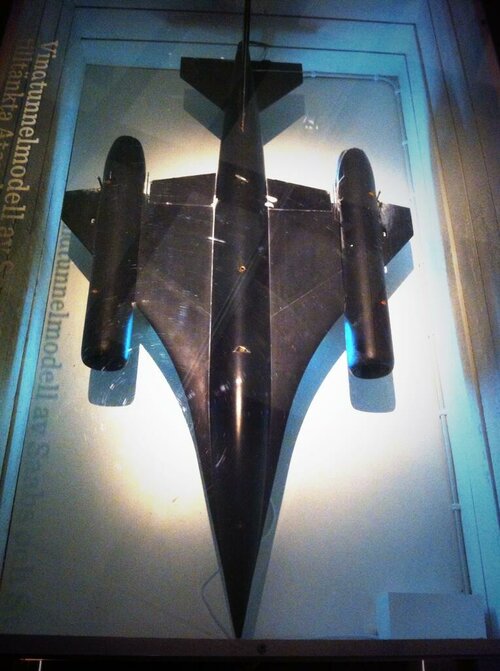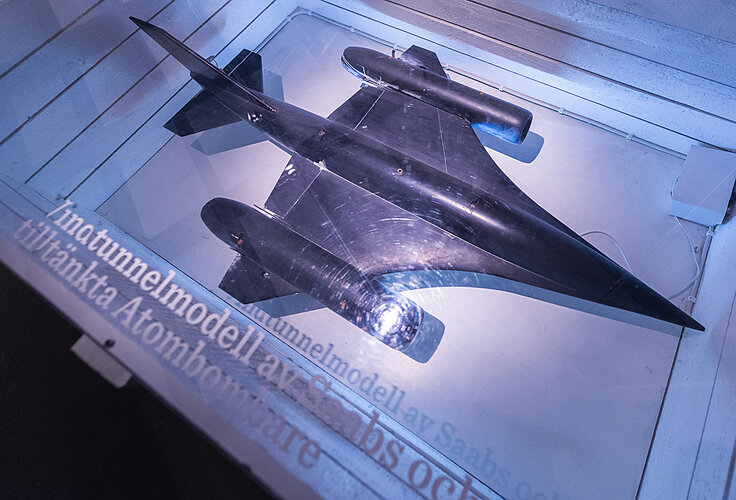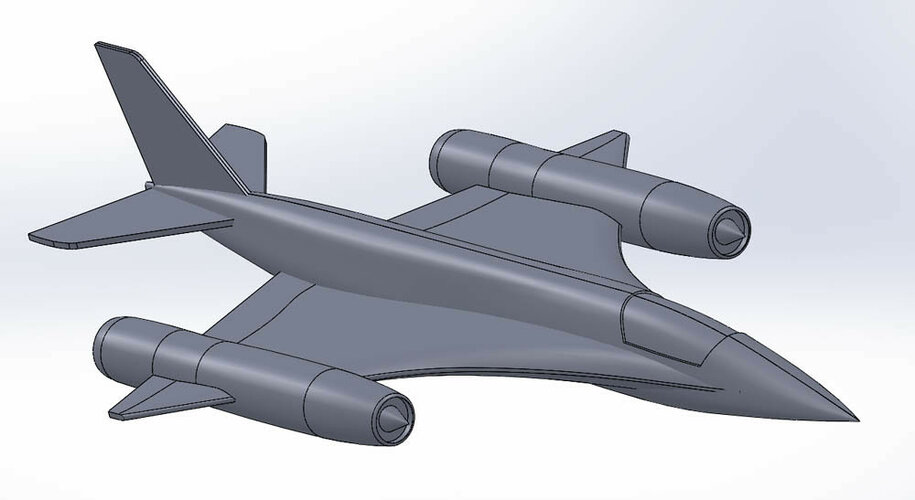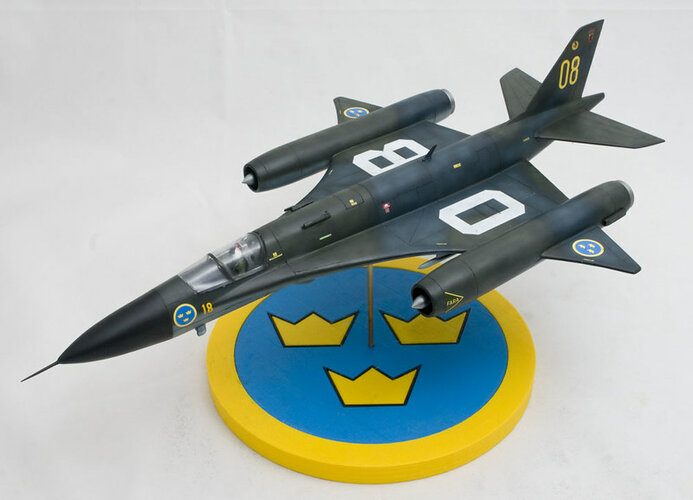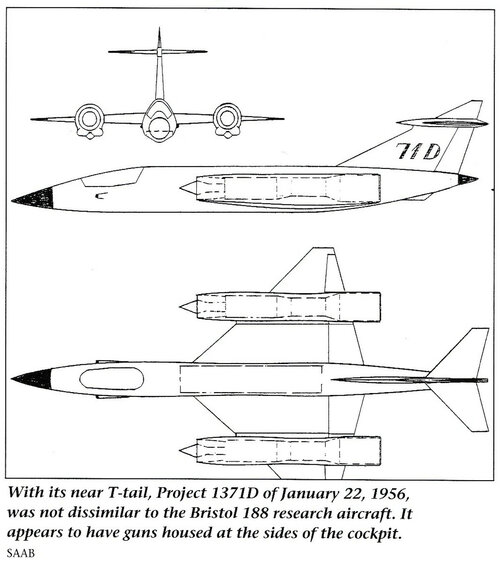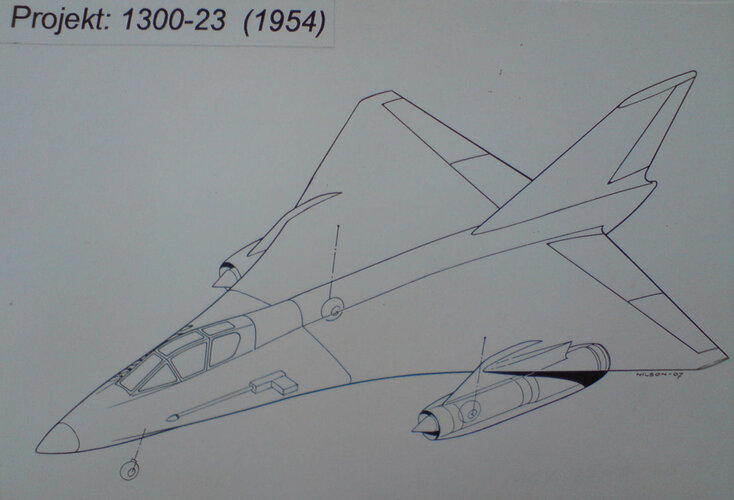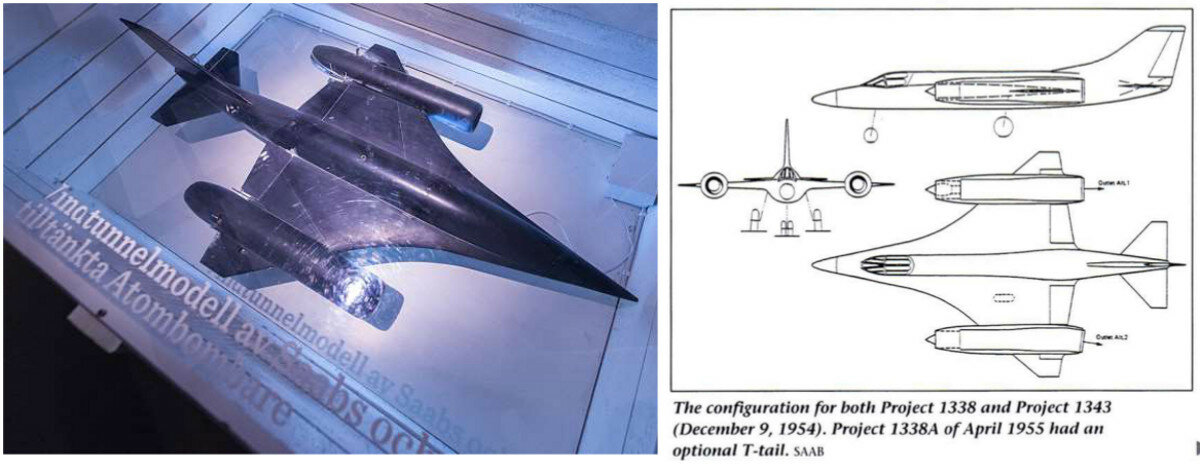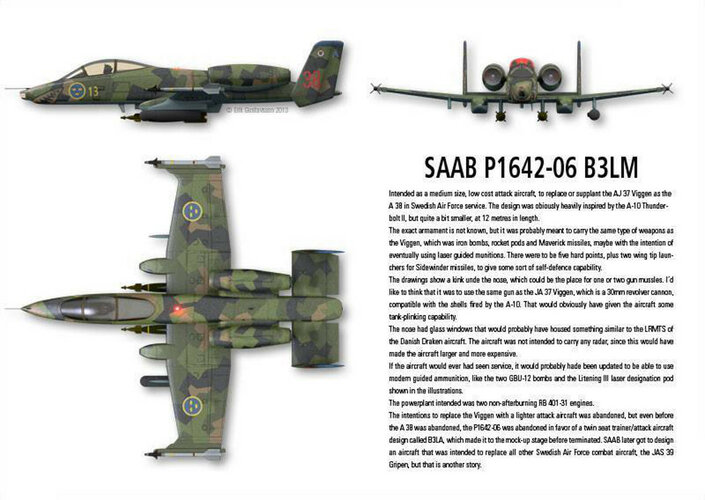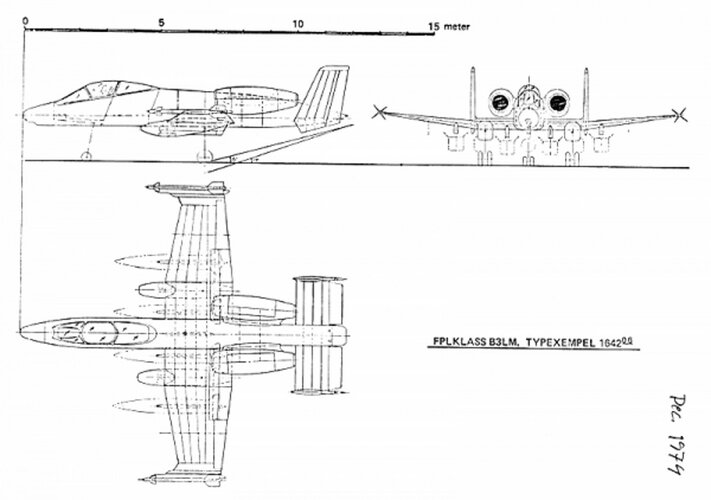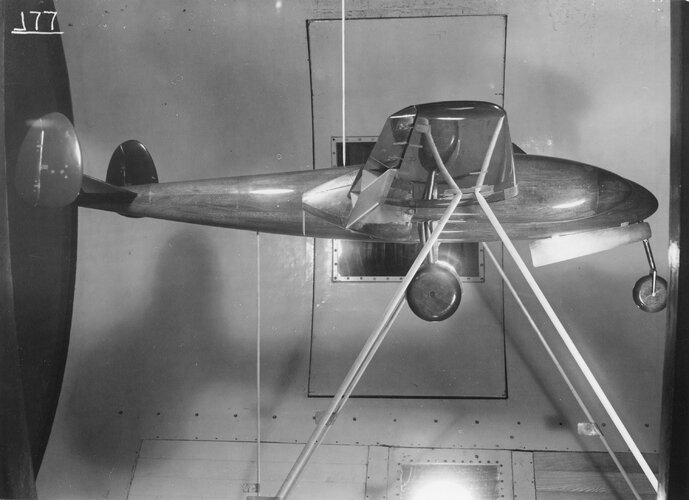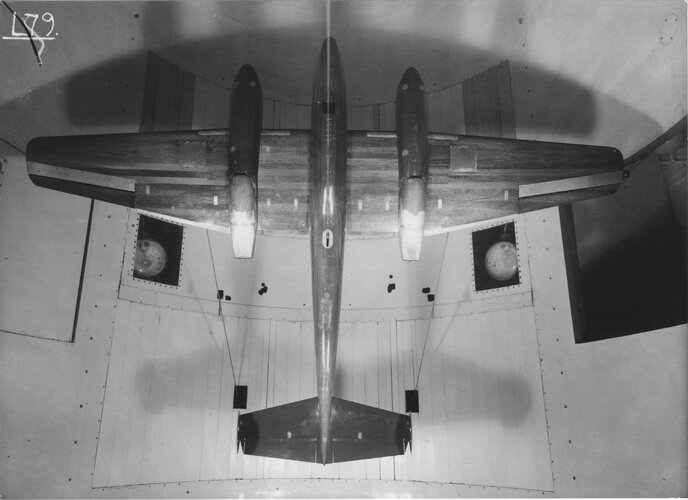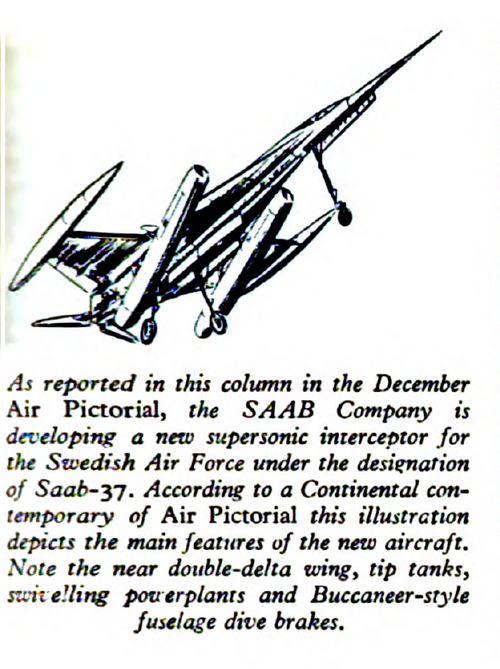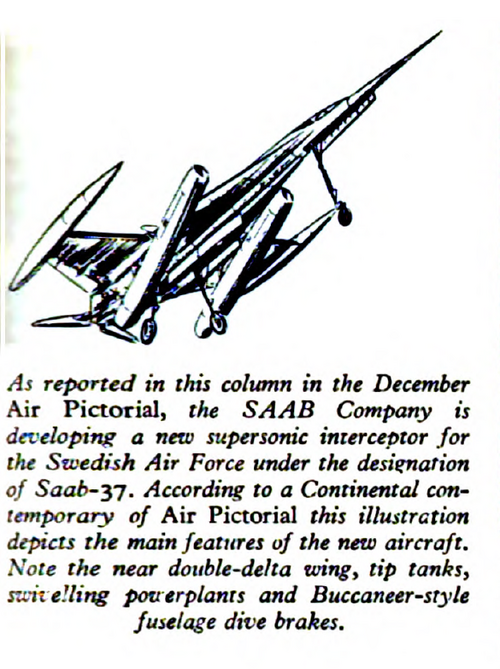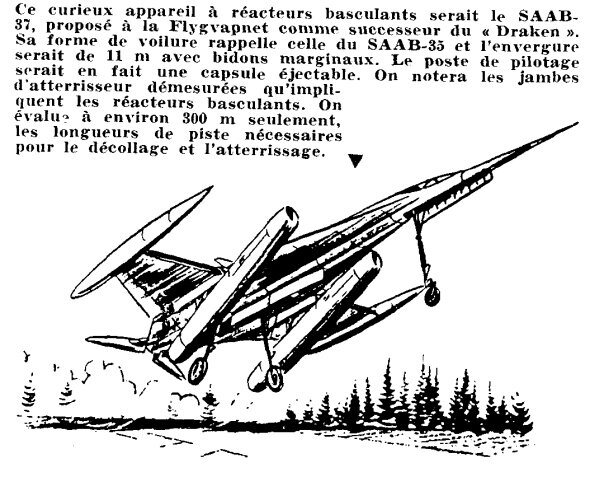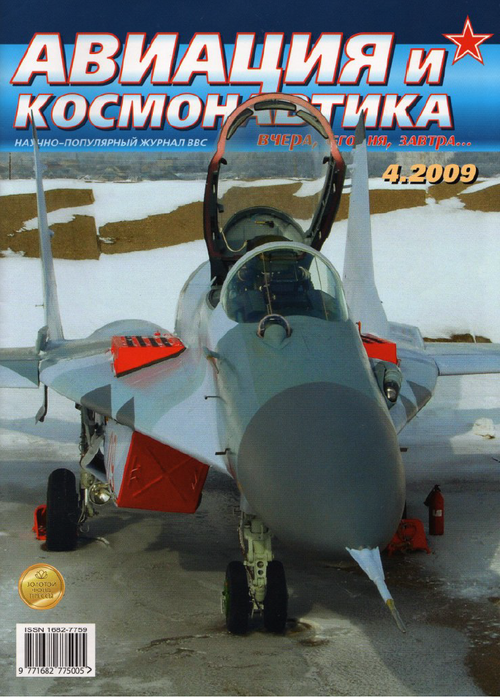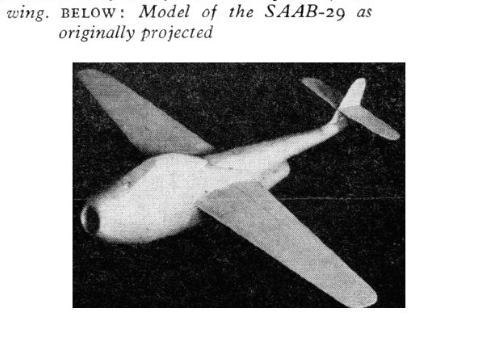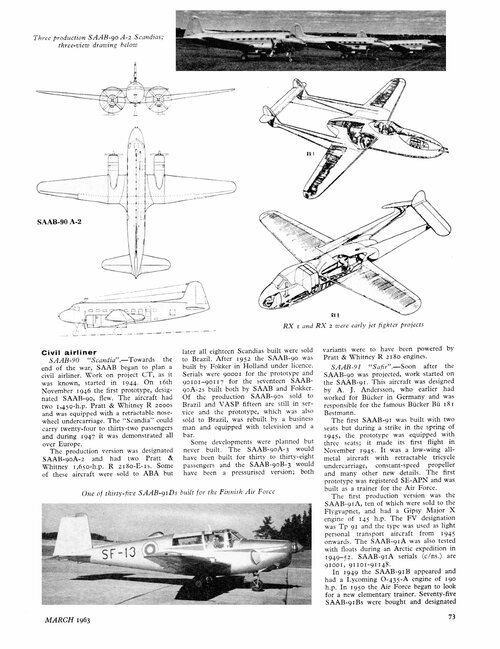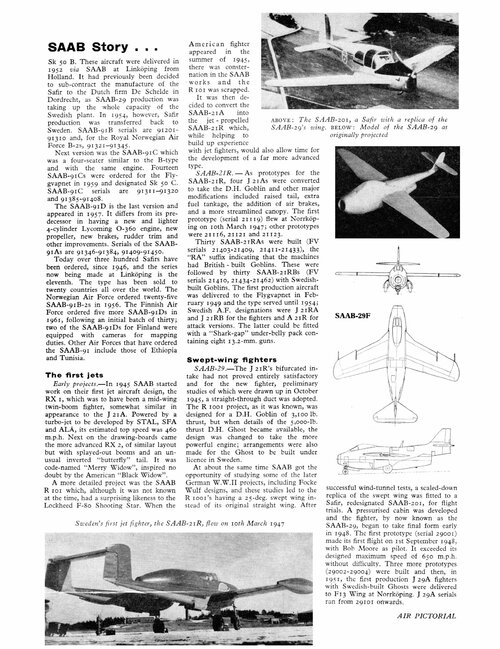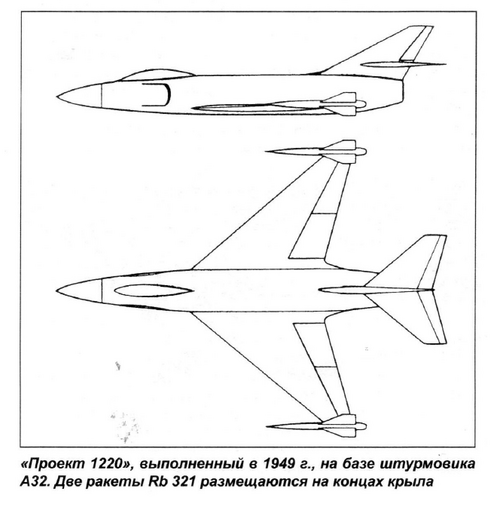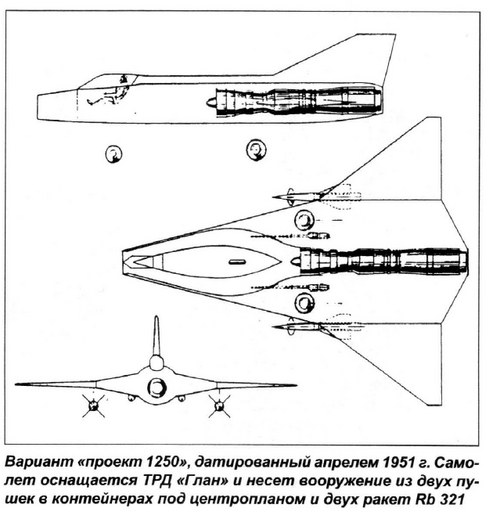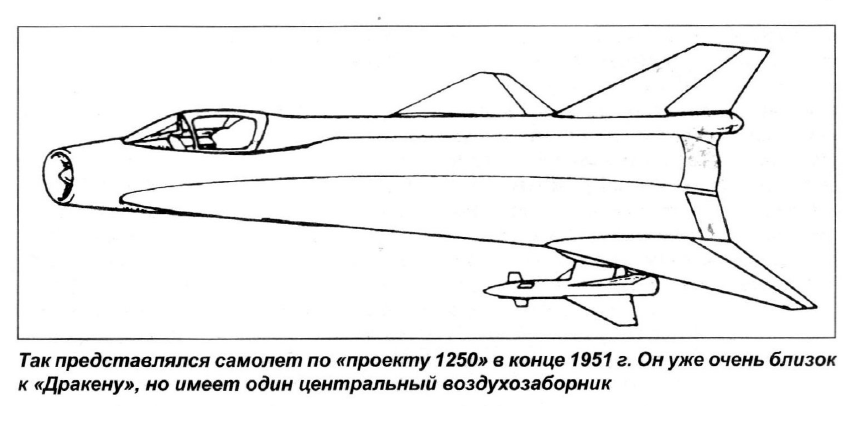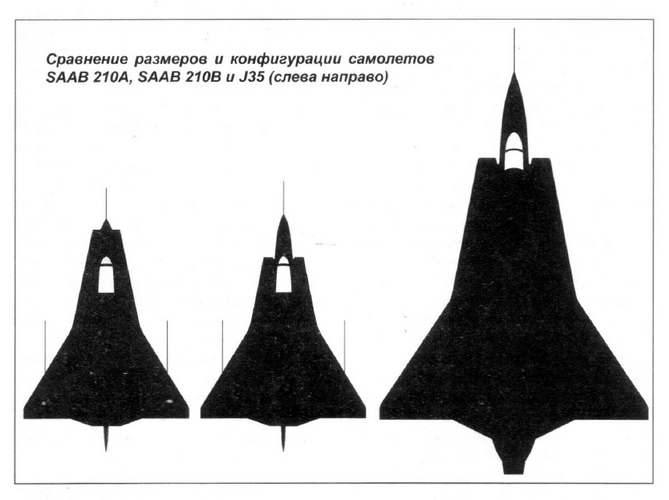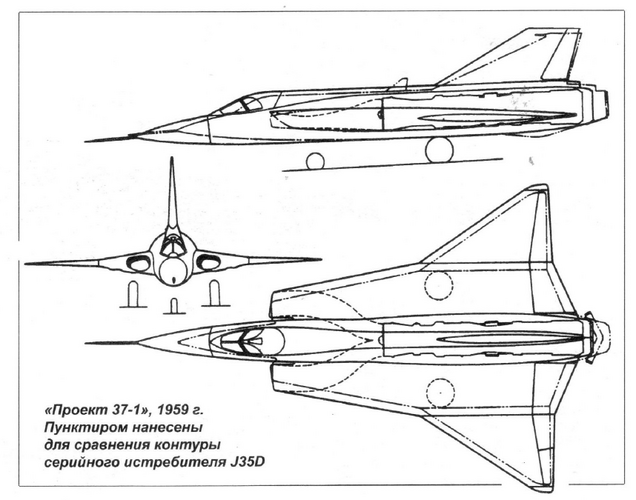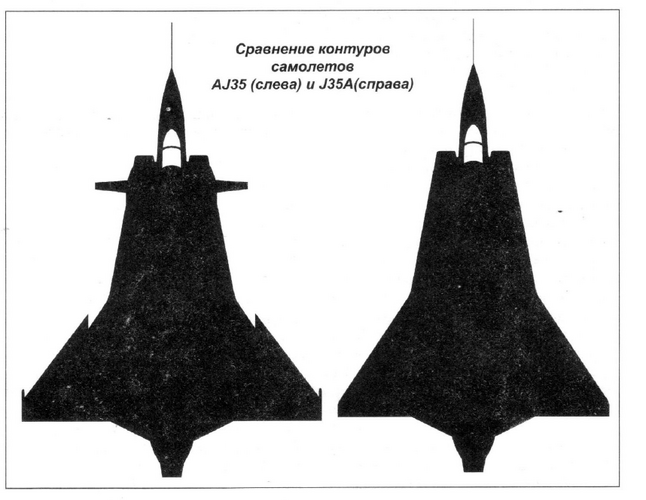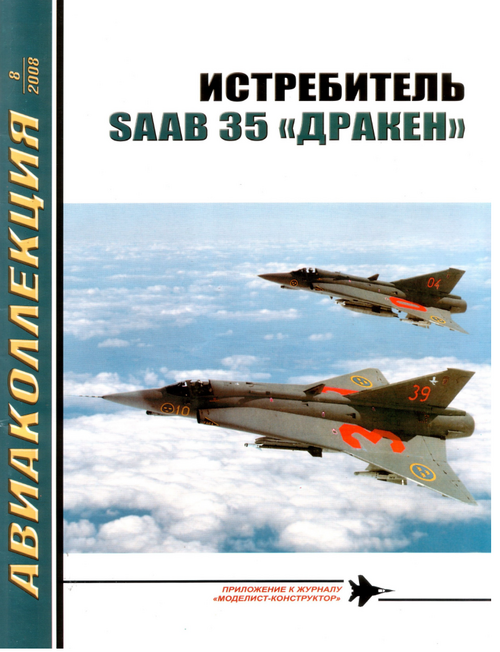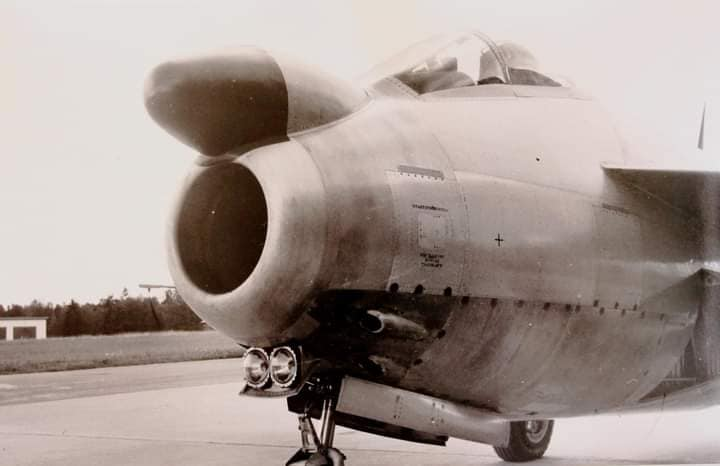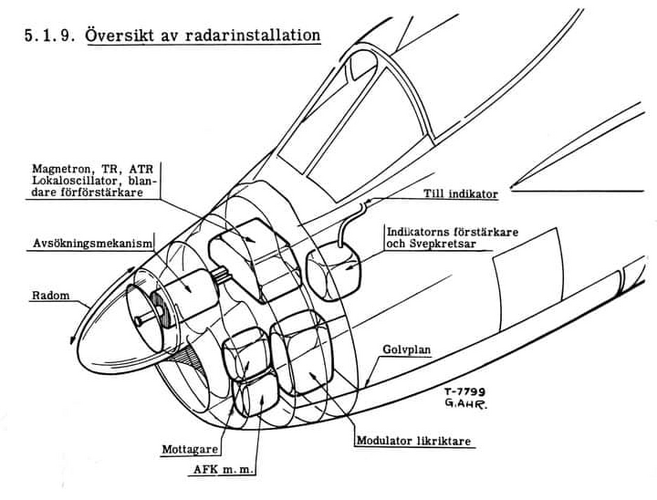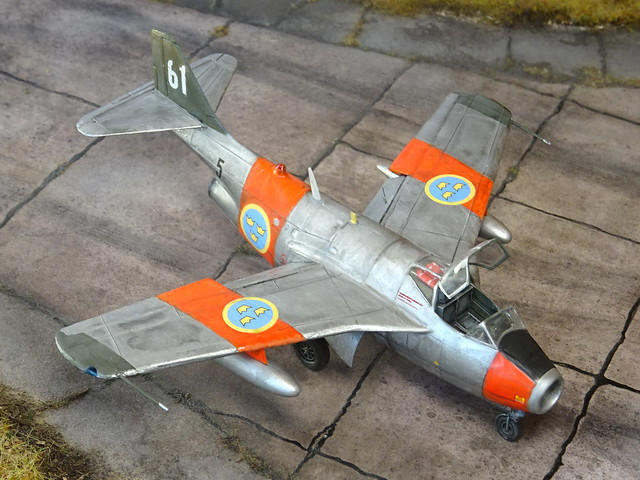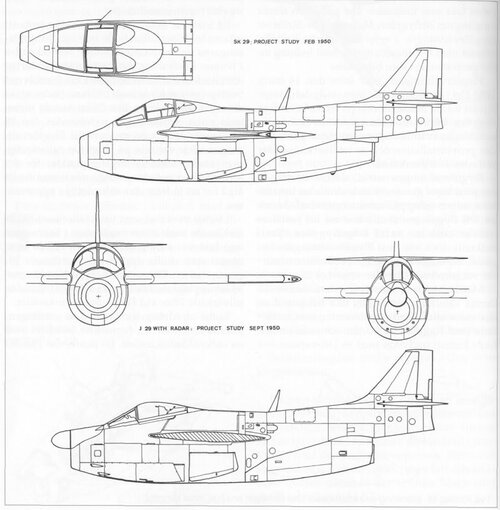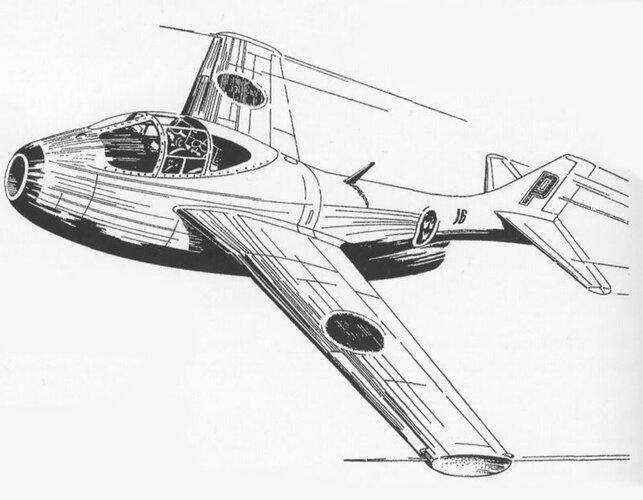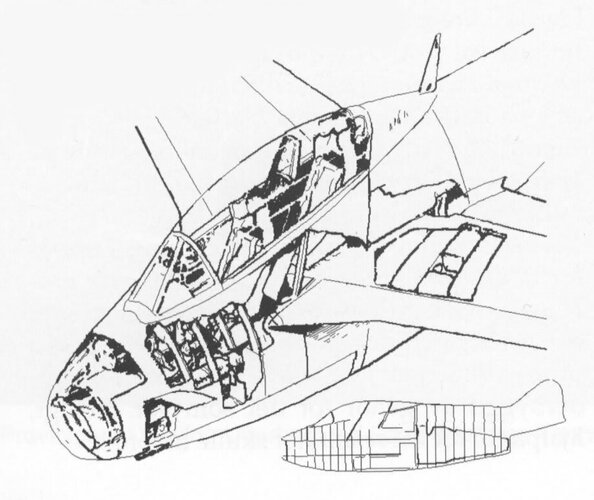You are using an out of date browser. It may not display this or other websites correctly.
You should upgrade or use an alternative browser.
You should upgrade or use an alternative browser.
SAAB Fighter / Attack projects
- Thread starter rousseau
- Start date
Airborne2001
ACCESS: Confidential
- Joined
- 19 June 2020
- Messages
- 162
- Reaction score
- 167
I like it. It sounds nice.Or maybe i should just call it Swedish secret air force projects and include weaponry as well?I am interested. I like the last name, but maybe add a date to it (EX: 1940 - 1950).What should such a book be called?
SAAB's thought process?
SAAB's thought experiments?
SAAB's combat aircraft projects?
SAAB's air force projects?
Swedish secret air force projects: 1926-1976?
lucamax
ACCESS: Secret
Ok: I'll start to buy a lot of lottery tickets! I'll call you if I'll win somethingWell i need funding for the bookI have already the money ready to buy thatI should write a book or something on this. There are so much shit that SAAB designed over the years. Anyone interested in that?
What i need to write such a book:
- A full season busscard. (ca 1000 euro)
- Rent money for a year: (ca 4200 euro)
- Material money (document scans) (idk 1000 euro?)
- Someone who can draw detailed and correct aircraft blueprints based on old linedrawings etc.
- Beer money to not go mad. (ca 1300 euro)
- A contact at Saab to clear up all their modern projects and numbers etc.
blackkite
Don't laugh, don't cry, don't even curse, but.....
- Joined
- 31 May 2007
- Messages
- 8,567
- Reaction score
- 6,742
Hi! 1300-71D. (1371D).
Wing plan form and horizontal tail stabilizer shape between wind tunnel test model and three side view drawing are different.
Three side view drawing source : AIR Enthusiast No.90, SECRET SAAB PROJECTS, Tony Buttler.
https://intscalemodeller.com/viewtopic.php?t=25589
https://tecnodefesa.com.br/saab-36-o-bombardeiro-supersonico-da-suecia/
"1300 Project
The end of World War II showed that humanity would enter, for decades to come, a polarized and tense world.
For the countries of Europe, the epicenter of this division of the world, there were moments of anguish and apprehension about the spectre of communism that was advancing mainly throughout Eastern Europe.
The scenario was even worse for non-aligned nations and, like Sweden. With relatively small territory, a lean economy that could not invest large amounts in defence and was immediately in front of the former Soviet Union, it was necessary to have deterrent elements to prevent its territory from being invaded in the event of a conflict.
Although qualitatively inferior, the military might of the countries of the former Warsaw Pact was much higher in numerical terms.
The scenario was even worse for non-aligned nations and, like Sweden. With relatively small territory, a lean economy that could not invest large amounts in defence and was immediately in front of the former Soviet Union, it was necessary to have deterrent elements to prevent its territory from being invaded in the event of a conflict.
One of the moves to ensure their safety was studies for the creation of nuclear weapons.
Although the country later did not effectively develop these weapons, it was necessary to have a vector that would transport and launch the bomb at the target.
It was then that the Project 1300, a supersonic bomber designed to reach altitudes of 60,000 feet (or 18,200m), maximum speed of Mach 2.14 (2,642km/h) and take a crew member, emerged. At 17m long and 9.6m in wingspan, the empty weight was nine tonnes and could carry an 800kg pump internally. Its engines were two Bristol Olympus engines, the same as the English Avro Vulcan bombers.
Apparently two other studies were done for the project which also became known as Saab A36. For both cases it would be single-engine, one version with the air intake under the fuselage (A36-76C) and the other with on this (A-36-77A)."
Wing plan form and horizontal tail stabilizer shape between wind tunnel test model and three side view drawing are different.
Three side view drawing source : AIR Enthusiast No.90, SECRET SAAB PROJECTS, Tony Buttler.
https://intscalemodeller.com/viewtopic.php?t=25589
https://tecnodefesa.com.br/saab-36-o-bombardeiro-supersonico-da-suecia/
"1300 Project
The end of World War II showed that humanity would enter, for decades to come, a polarized and tense world.
For the countries of Europe, the epicenter of this division of the world, there were moments of anguish and apprehension about the spectre of communism that was advancing mainly throughout Eastern Europe.
The scenario was even worse for non-aligned nations and, like Sweden. With relatively small territory, a lean economy that could not invest large amounts in defence and was immediately in front of the former Soviet Union, it was necessary to have deterrent elements to prevent its territory from being invaded in the event of a conflict.
Although qualitatively inferior, the military might of the countries of the former Warsaw Pact was much higher in numerical terms.
The scenario was even worse for non-aligned nations and, like Sweden. With relatively small territory, a lean economy that could not invest large amounts in defence and was immediately in front of the former Soviet Union, it was necessary to have deterrent elements to prevent its territory from being invaded in the event of a conflict.
One of the moves to ensure their safety was studies for the creation of nuclear weapons.
Although the country later did not effectively develop these weapons, it was necessary to have a vector that would transport and launch the bomb at the target.
It was then that the Project 1300, a supersonic bomber designed to reach altitudes of 60,000 feet (or 18,200m), maximum speed of Mach 2.14 (2,642km/h) and take a crew member, emerged. At 17m long and 9.6m in wingspan, the empty weight was nine tonnes and could carry an 800kg pump internally. Its engines were two Bristol Olympus engines, the same as the English Avro Vulcan bombers.
Apparently two other studies were done for the project which also became known as Saab A36. For both cases it would be single-engine, one version with the air intake under the fuselage (A36-76C) and the other with on this (A-36-77A)."
Attachments
Last edited:
blackkite
Don't laugh, don't cry, don't even curse, but.....
- Joined
- 31 May 2007
- Messages
- 8,567
- Reaction score
- 6,742
Hi! SAAB 1323 (or 1300-23), an early step in the A36 development.
https://sturgeonshouse.ipbhost.com/topic/995-the-swedish-nuclear-bomber-saab-a36/
https://sturgeonshouse.ipbhost.com/topic/995-the-swedish-nuclear-bomber-saab-a36/
Attachments
blackkite
Don't laugh, don't cry, don't even curse, but.....
- Joined
- 31 May 2007
- Messages
- 8,567
- Reaction score
- 6,742
blackkite
Don't laugh, don't cry, don't even curse, but.....
- Joined
- 31 May 2007
- Messages
- 8,567
- Reaction score
- 6,742
Attachments
-
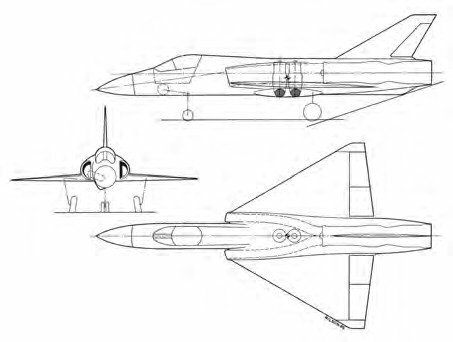 The Saab 1508 A2 was to be powered by three RB168 Spey engines.jpg20.6 KB · Views: 386
The Saab 1508 A2 was to be powered by three RB168 Spey engines.jpg20.6 KB · Views: 386 -
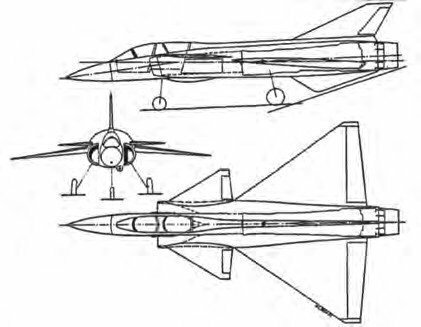 Project 1534 as it appeared on 10 January 1962..jpg24.5 KB · Views: 351
Project 1534 as it appeared on 10 January 1962..jpg24.5 KB · Views: 351 -
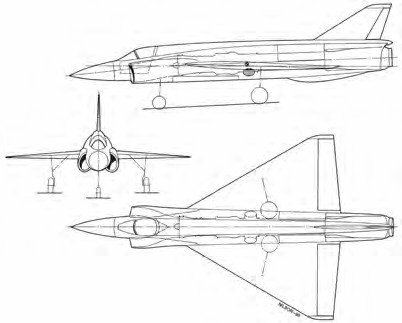 A three-view of the 1562 project. Presented in November 1961, this configuration looks like a ...jpg19.5 KB · Views: 339
A three-view of the 1562 project. Presented in November 1961, this configuration looks like a ...jpg19.5 KB · Views: 339 -
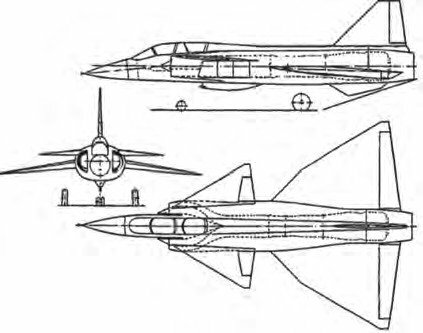 The aircraft 37 TK 1 (type configuration 1) as it looked on 6 June 1962..jpg25.6 KB · Views: 547
The aircraft 37 TK 1 (type configuration 1) as it looked on 6 June 1962..jpg25.6 KB · Views: 547
blackkite
Don't laugh, don't cry, don't even curse, but.....
- Joined
- 31 May 2007
- Messages
- 8,567
- Reaction score
- 6,742
Hi! Little larger image.
B3LM could carry Maverick missile.
https://www.snafu-solomon.com/2015/11/blast-from-pastthe-swedish-10-saab.html
B3LM could carry Maverick missile.
https://www.snafu-solomon.com/2015/11/blast-from-pastthe-swedish-10-saab.html
Attachments
Last edited:
blockhaj
Swedish "want to be" aviation specialist
- Joined
- 9 February 2017
- Messages
- 387
- Reaction score
- 459
No idea if this has been posted. Images of the Saab 24 wind tunnel model.

 digitaltmuseum.se
digitaltmuseum.se
Vindtunnelmodell av flygplan JB-24 i låghastighetstunnel på Flygtekniska försöksanstalten. Vy från sidan.
Flygvapenmuseum - Photographer Flygtekniska försöksanstalten
Attachments
- Joined
- 25 June 2014
- Messages
- 1,564
- Reaction score
- 1,483
Saab's numbering systems did wander about a bit. The J-51 does have good credentials, being first published in a contemporary Swedish journal. It looks not unlike the first iteration of the Lildraken, before they cut back the intakes. A reasonable guess might be that it was the initial fighter design study which led to the Lildraken, and that the resulting Draken proper was then developed based on the success of the Lildraken's midlife nose job.BTW: J-51 doesn't fit too much with Flygvapnet number series. The contemporary Draken was J-35, while the much later Viggen was "37" and Gripen is "39". Following the sequence I imagine that J-51 is expected to be used for some Flygvatnet frontline fighter in a distant future.
Intriguingly, it is basically a double-delta flying wing with twin engines which presumably had to find room later for a single but much larger engine.
StormOurBeloved
ACCESS: Restricted
- Joined
- 9 June 2022
- Messages
- 1
- Reaction score
- 0
Are there any pictures out there of Projekt 1536, the VTOL Viggen Design?
- Joined
- 26 May 2006
- Messages
- 33,449
- Reaction score
- 13,474
Saab 37?
Air Revue April 1961
Also from Air Pictorial 1961.
Attachments
- Joined
- 6 November 2010
- Messages
- 4,591
- Reaction score
- 4,024
Posted 13 years ago here:
- Joined
- 26 May 2006
- Messages
- 33,449
- Reaction score
- 13,474
Sorry,we can delete it.
F.L.
ACCESS: Top Secret
It would be a shame to delete it, because the two images are not exactly similar.
Sorry,we can delete it.
Last edited:
F.L.
ACCESS: Top Secret
Is there more information about this variant of the Saab 18 :
- B 18R - Suggested jet variant equipped with STAL jet engines. The project came fairly far and an airframe was selected to be converted into the prototype in 1945. The plan was never followed through due to the development of the T 18B taking priority.
F.L.
ACCESS: Top Secret
F.L.
ACCESS: Top Secret
Isn't that right ?
- Joined
- 16 April 2008
- Messages
- 9,003
- Reaction score
- 12,658
The top one has just been copied, had the background erased, and then rotated slightly.
blockhaj
Swedish "want to be" aviation specialist
- Joined
- 9 February 2017
- Messages
- 387
- Reaction score
- 459
Here is an update on this test from the Swedish Historical Aviation Forum: https://forum.flyghistoria.org/viewtopic.php?f=31&t=8775So the J 29 with aden cannons was prototyped.


See the latest post.
- Joined
- 26 May 2006
- Messages
- 33,449
- Reaction score
- 13,474
From Air Pictorial 1963.
Also from the same source.
Attachments
- Joined
- 26 May 2006
- Messages
- 33,449
- Reaction score
- 13,474
- Joined
- 26 May 2006
- Messages
- 33,449
- Reaction score
- 13,474
Hi,
SK 29 – Planned training version. It could have featured a two-seated cockpit, with seats placed side-by-side, no armament and limited fuel capacity. Cancelled.
J 29R – All-weather fighter version equipped with an air intercept radar. Cancelled.

 plane-encyclopedia.com
plane-encyclopedia.com
SK 29 – Planned training version. It could have featured a two-seated cockpit, with seats placed side-by-side, no armament and limited fuel capacity. Cancelled.
J 29R – All-weather fighter version equipped with an air intercept radar. Cancelled.

Saab 29 Tunnan
The Saab 29 Tunnan was a single-seat, single-engine transonic aircraft and first-generation jet fighter. It was a small aircraft with a single central air intake placed at the nose, a bubble cockpi…
 plane-encyclopedia.com
plane-encyclopedia.com
- Joined
- 21 May 2006
- Messages
- 2,833
- Reaction score
- 1,912
Can anyone identify the missile in these drawings please?From this one.
Regards
Pioneer
blockhaj
Swedish "want to be" aviation specialist
- Joined
- 9 February 2017
- Messages
- 387
- Reaction score
- 459
rb 321Can anyone identify the missile in these drawings please?
Regards
Pioneer
blockhaj
Swedish "want to be" aviation specialist
- Joined
- 9 February 2017
- Messages
- 387
- Reaction score
- 459
29RHi,
SK 29 – Planned training version. It could have featured a two-seated cockpit, with seats placed side-by-side, no armament and limited fuel capacity. Cancelled.
J 29R – All-weather fighter version equipped with an air intercept radar. Cancelled.

Saab 29 Tunnan
The Saab 29 Tunnan was a single-seat, single-engine transonic aircraft and first-generation jet fighter. It was a small aircraft with a single central air intake placed at the nose, a bubble cockpi…plane-encyclopedia.com
Attachments
F.L.
ACCESS: Top Secret
Is there any drawings of the SK 29 ?SK 29 – Planned training version. It could have featured a two-seated cockpit, with seats placed side-by-side, no armament and limited fuel capacity. Cancelled.
- Joined
- 26 May 2006
- Messages
- 33,449
- Reaction score
- 13,474
No drawing F.L.
From the same site,
Saab 37 Eurofighter – Proposed replacement for NATO F-104 Starfighter. None built.
Saab 37 X – Proposed version to be exported to Norway. None built.

 plane-encyclopedia.com
plane-encyclopedia.com
From the same site,
Saab 37 Eurofighter – Proposed replacement for NATO F-104 Starfighter. None built.
Saab 37 X – Proposed version to be exported to Norway. None built.

Saab S37 Viggen
A single-seat, single-engine fighter with low double delta wing and with two canards equipped with flaps, it was intended to replace the Saab J35 Draken. Its first flight took place in 1967, and by…
 plane-encyclopedia.com
plane-encyclopedia.com
blockhaj
Swedish "want to be" aviation specialist
- Joined
- 9 February 2017
- Messages
- 387
- Reaction score
- 459
Yes, in several books. Here is a model of it i found on flickr.Is there any drawings of the SK 29 ?
Attachments
- Joined
- 28 November 2006
- Messages
- 703
- Reaction score
- 692
Apparently there were two variants of the Sk29: one with side-by-side cockpit and the other with tandem seating.Is there any drawings of the SK 29 ?
Attachments
F.L.
ACCESS: Top Secret
Thanks !!!Apparently there were two variants of the Sk29: one with side-by-side cockpit and the other with tandem seating.
blockhaj
Swedish "want to be" aviation specialist
- Joined
- 9 February 2017
- Messages
- 387
- Reaction score
- 459
Earlier in this thread.J 29R - I have read that it was also considered to place the radome in the center of the air inlet. Any known drawings?
Attachments
Similar threads
-
Saab Viggen concepts and unbuilt versions
- Started by Pioneer
- Replies: 39
-
Design development of the SAAB JAS 39 Gripen
- Started by arc3371
- Replies: 45
-
SAAB, Svenska Aeroplanaktiebolaget, Svenska Aeroplan AB, Saab AB aircraft list.
- Started by blockhaj
- Replies: 39
-
-

